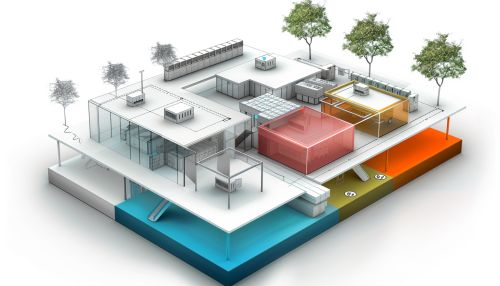Bell–LaPadula model
Introduction
The Bell–LaPadula model (BLP) is a formal model used in the field of computer security to ensure confidentiality of data. It was developed by David Elliott Bell and Leonard J. LaPadula in response to the U.S. Department of Defense's initiative to develop a robust method of securing computer systems.
Background
The development of the Bell–LaPadula model was a response to the increasing reliance on computer systems to handle sensitive and classified information. The need for a formal model to guide the design and implementation of secure systems was recognized by the U.S. Department of Defense, leading to the creation of the BLP model.
Model Overview
The Bell–LaPadula model is based on the concept of secure state and transition. It defines a set of access control rules which a system must adhere to in order to be considered secure. These rules are enforced through a series of security levels and categories, which are used to classify both the data in the system and the users who access it.


Security Levels and Categories
In the Bell–LaPadula model, data and users are classified according to security levels and categories. Security levels are hierarchical and usually correspond to the sensitivity of the data. For example, a typical system might have security levels such as Unclassified, Confidential, Secret, and Top Secret.
Security categories, on the other hand, are non-hierarchical and usually correspond to different areas of information. For example, a system might have security categories such as Nuclear, Financial, and Personnel.
Access Control Rules
The Bell–LaPadula model enforces access control through two primary rules: the Simple Security Property and the *-property (Star Property).
The Simple Security Property, also known as "no read up, no write down" (NRU, NWD), states that a subject cannot read data at a higher security level (no read up) and cannot write data to a lower security level (no write down).
The *-property, also known as "no write up, no read down" (NWU, NRD), is a stronger rule that states a subject cannot write data to a higher security level (no write up) and cannot read data from a lower security level (no read down).
Criticisms and Limitations
While the Bell–LaPadula model has been influential in the development of secure systems, it is not without its criticisms and limitations. One of the main criticisms is that it focuses solely on the confidentiality of data, neglecting other aspects of information security such as integrity and availability. Furthermore, the model assumes that all users will comply with the access control rules, which is not always the case in real-world systems.
Conclusion
Despite its limitations, the Bell–LaPadula model remains a fundamental model in computer security. Its principles continue to guide the design and implementation of secure systems, and its influence can be seen in many modern security architectures.
